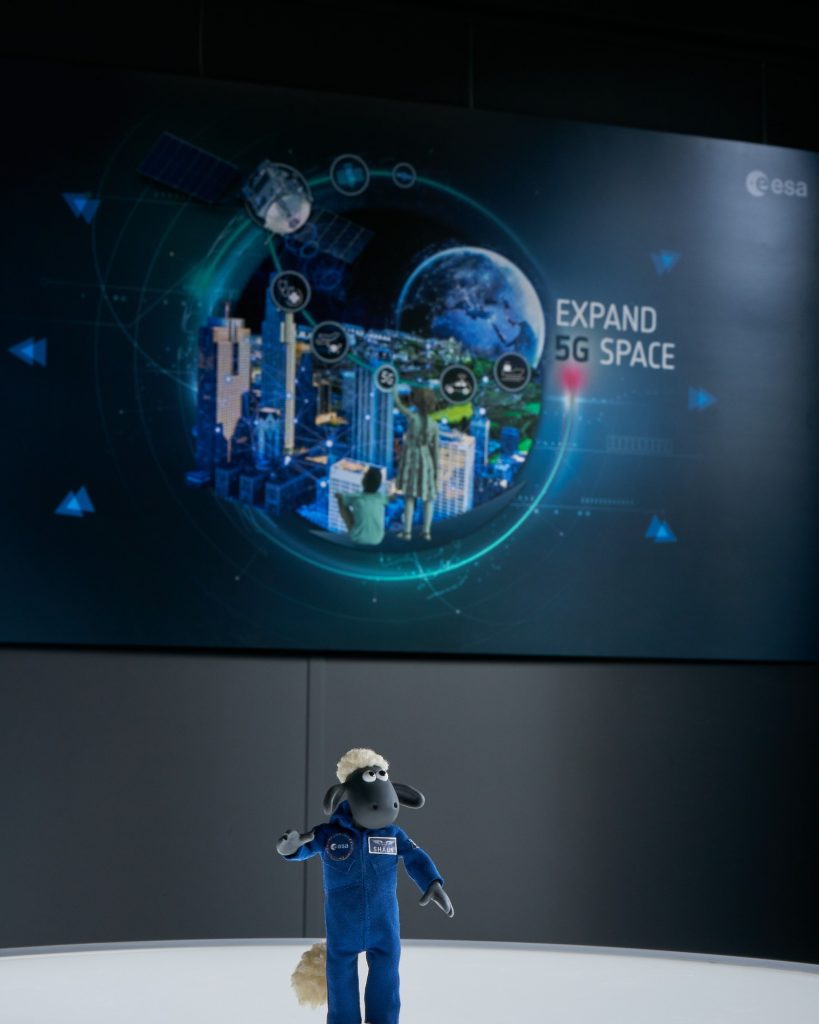ESA is sending astronauts and robots to the Moon and beyond not for fun, but to transmit new knowledge to everybody on Earth – for this we need a robust communications network.
By taking part in Artemis I, Shaun the Sheep has a front row seat shaping the future of ovine space exploration. Shaun might be the first, but many more astronauts will follow in his hooves to the Moon, and European experts are working to bring connectivity and satnav services to our natural satellite in project Moonlight.
Shaun visited ESA’s European Centre for Space Applications and Telecommunications (ECSAT) in the UK, where he was briefed on how to phone home (technically he could call for pizza, but finding a company that can deliver Shaun’s favourite dish is proving difficult) and on the progress of Moonlight by the engineers who are overseeing its development.

Through Moonlight, ESA is collaborating with industry to put a constellation of satellites around the Moon to provide communications and navigation services for all visitors who are lucky enough to fly there – robotic, human or sheep.
Reliable lunar communications and navigation services would allow for a sustainable lunar presence, as well as enabling science that will advance understanding of the Solar System and its processes.
What is ESA’s Moonlight initiative?
It could allow missions to land wherever they wanted, enable astronomers to set up observatories on the far side of the Moon, and support the teleoperation of rovers and other equipment from Earth.
David Gómez Otero, ESA’s technical lead for the Moonlight initiative, said: “As Shaun ventures into deep space on Artemis I – as the first baahstronaut explorer, ESA and European industry are advancing the development of Moonlight.
“This will ultimately provide a natural extension of the terrestrial coverage we all enjoy on Earth, with the aim of supporting future missions to the Moon and beyond.”
During his visit to ECSAT, Shaun also visited ESA’s centre for telecommunications innovation, called the 5G/6G Hub.

He visited the Moon and Mars Room, a recently-opened addition to the Hub. Using virtual and augmented reality, this new addition showcases how lunar-5G could support the remote operation of equipment and technology on the Moon, as well as enabling astronauts to communicate seamlessly with people back on Earth.
Antonio Franchi, head of ESA’s 5G/6G programme, said: “At the 5G/6G Hub we are always looking to foster new collaborations, so it was great to welcome Shaun to the facility to highlight the key role next-generation connectivity will have in future deep space exploration.”

 Automated Transfer Vehicle page
Automated Transfer Vehicle page ATV blog archive
ATV blog archive
 NASA Orion page
NASA Orion page NASA Artemis
NASA Artemis Airbus Orion page
Airbus Orion page
Discussion: no comments